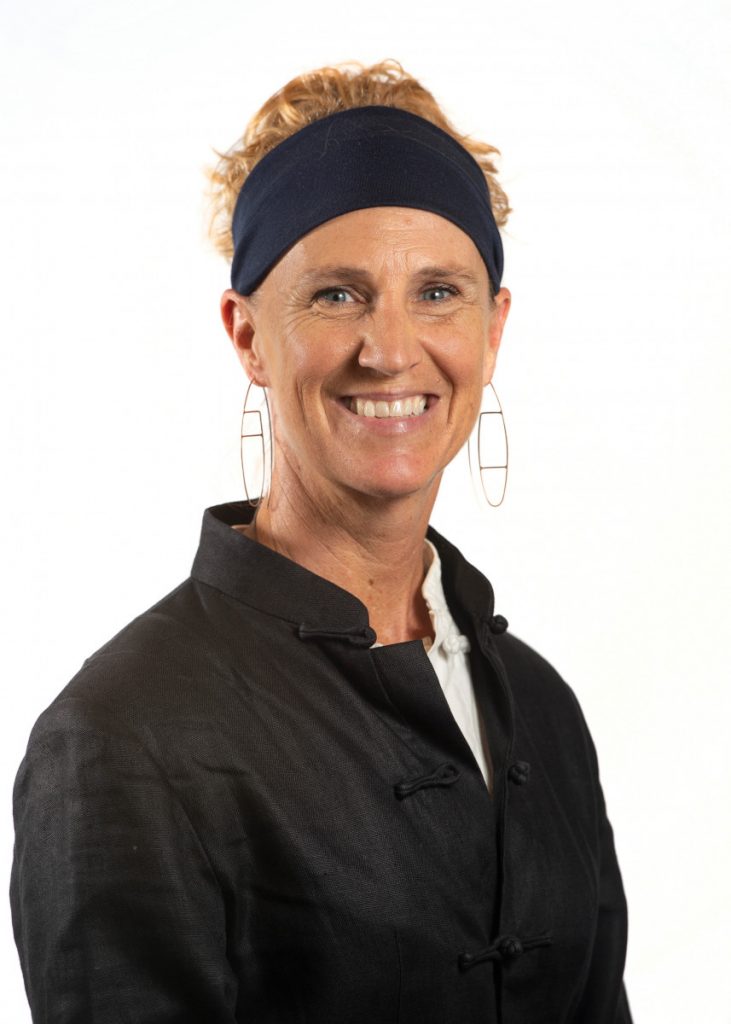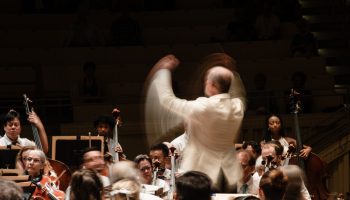
Gabriel Weber
Staff Writer
Complex problems require innovative solutions. Chautauqua Symphony Orchestra double bassist Caitlyn Kamminga finds that art is a powerful catalyst for change when it comes to the problem of the climate crisis. At 12:30 p.m. today in Smith Wilkes Hall, Kamminga will present “Just the Right Climate for Metaphors!” for the Chautauqua Climate Change Initiative.
Along with being a professional double bassist, Kamminga teaches at the University of Trinidad and Tobago. She created the Teaching Artist Pathway at the university, which trains student teaching artists to utilize their performance skills in meaningful and relevant ways within the community, as well as the class “Creative Climate Communication” for students to pair art with the science of climate change.
Kamminga also achieved her Executive Graduate Certificate at The Global Leaders Program in 2021. A prestigious program, her certificate was in social entrepreneurship, cultural agency, policy leadership, teaching artistry and organizational management.
“When they asked us to design our final capstone, they asked each of us to identify the leading issue of our time, and I didn’t think there could be any other answer than climate change,” Kamminga said. “It intersects with every other issue of our time — poverty, health, gender, racial inequities and education —
and of course, marginalized communities are hit the hardest.”
In her research, Kamminga has focused on the tipping point for individuals taking action.
“Researchers say that the five things (for the tipping point of action) are that scientists agree on the facts; climate change is real; human activity is the main cause; the situation is truly dire; and there’s still hope. If you don’t have hope, then you just go back to bed, you pull the covers over your head and you don’t do anything,” Kamminga said. “There is a real hope gap, and that is an area that teaching artists and scientists could work together on.”
Kamminga believes that congruence between the two different sides of the brain — the experiential side and analytical side — is necessary for true movement. While scientists agree that the Earth is heating up due to human activity, there has been limited progress in addressing climate change.
“Scientists used to think that brains were like a computer and that they gather data and spit it back out, and that was what really caused us to act, and that when we were acting on our emotions, it was like a misfire or hysteria. But they really tell us that it’s not logic and judgment,” Kamminga said. “When we choose to act in our daily lives, it comes from that emotional experience. …. You need the facts, but it’s really storytelling and relationships.”
In the interactive session, Kamminga will talk for about 15 minutes, providing the context on what inspires people to act and how metaphors interact with the brain in a different way, then the attendees will discuss why certain images do or don’t work for mobilization. Moving on to the project she’s working on, Kamminga will outline the metaphor she employs — metamorphosis.
“A caterpillar eats five times its weight — gorging itself in the way that we are doing with our planet — and then its body starts to freak out when it goes into the chrysalis. There are these little cells called imaginals,” Kamminga said. “These little cells start humming inside the chrysalis as individuals, but it’s not until they figure out that they have to hum together and work together that the caterpillar completely transforms into an entirely different being, becoming a butterfly. The whole concept of these scalable residencies is that when kids start as individuals, it’s not until they realize that they have to work together for us to actually make change.”
A community inspired to act together stems from an awareness that there is a real problem and that it requires real imaginative conversations.
“I think it’s important not to think on too grand a scale. In a lot of situations, for me, with these schools’ residencies, it’s just starting with awareness — how can we start dreaming up solutions to adapt to a changing world?” Kamminga said. “Unless we’re all okay, none of us are okay.”
Chautauqua is unique in that the culture covets those open conversations.
“I was incredibly grateful to (CCI Director) Mark Wenzler,” Kamminga said. “He and I have collaborated on a few other things, and I’m really grateful that he is interested in collaborating with a wide variety of people on what can quite often feel incredibly overwhelming. I’m grateful to Chautauqua Institution, just for people wanting to come here and make a difference. It’s not just about recreation — it’s also about thinking deeply, sharing and discussing.”




